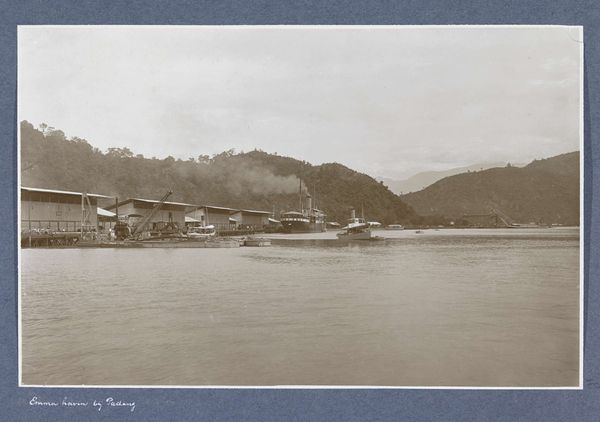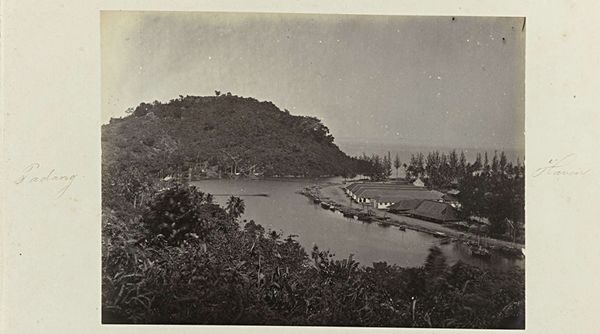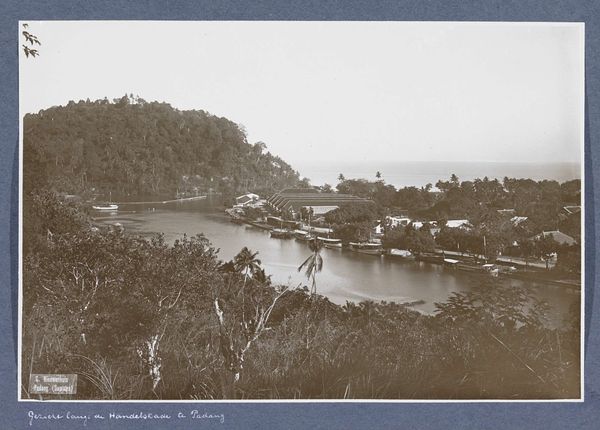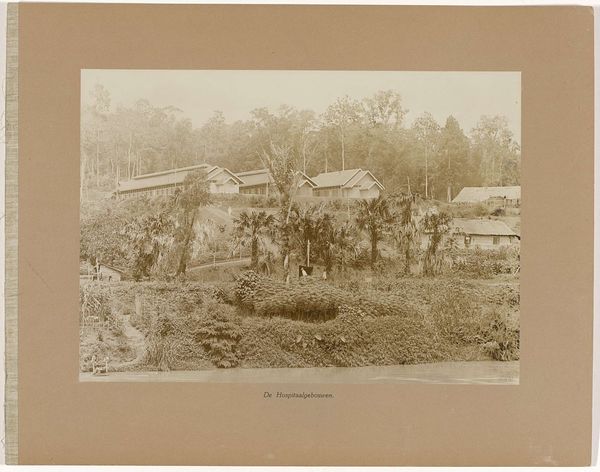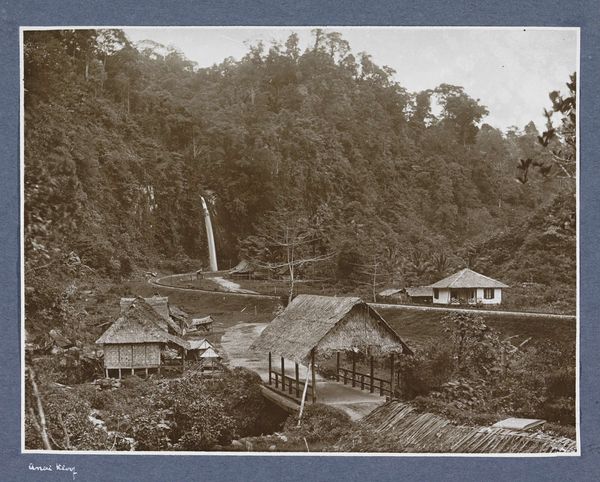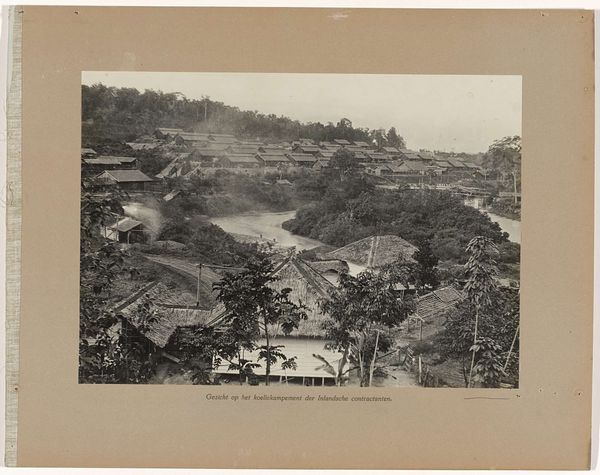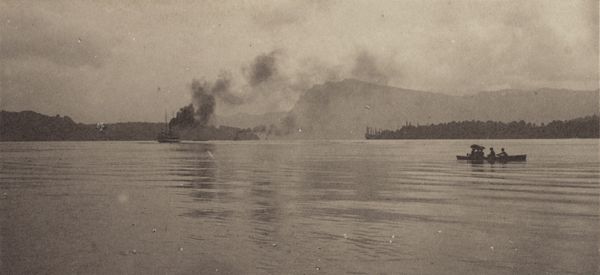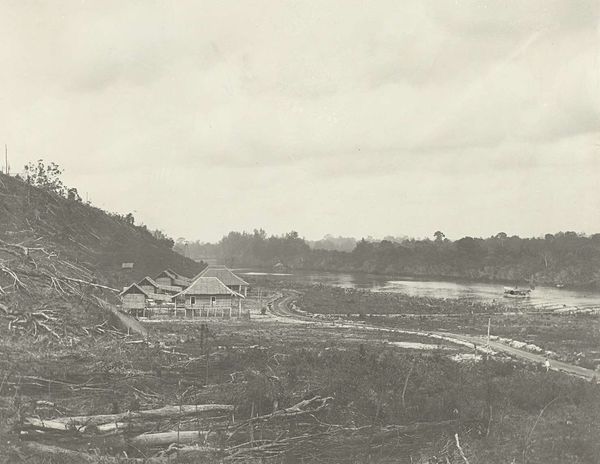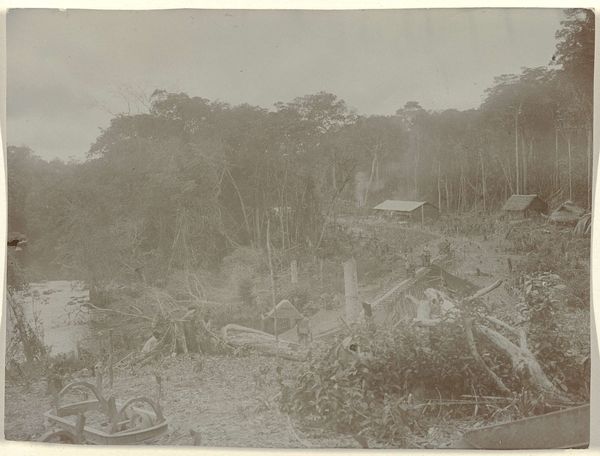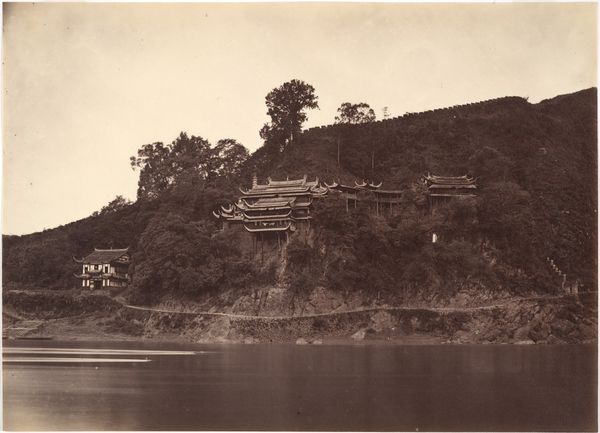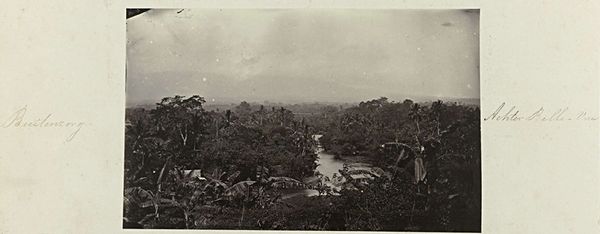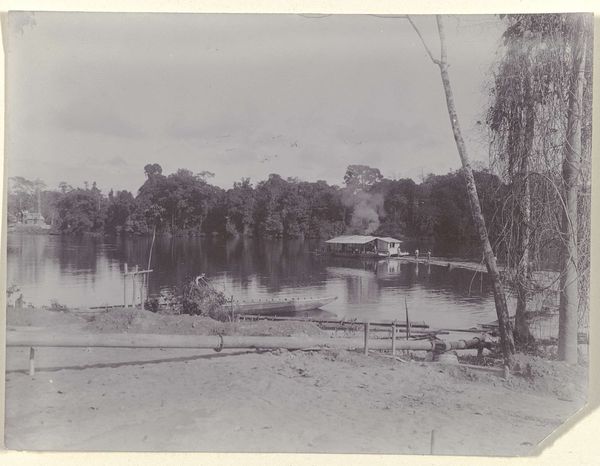
photography, albumen-print
#
landscape
#
nature
#
outdoor photography
#
photography
#
monochrome photography
#
cityscape
#
albumen-print
Dimensions: height 117 mm, width 180 mm
Copyright: Rijks Museum: Open Domain
Curator: Johanna Hermina Marmelstein created this albumen print titled "Een fabriek in Telok, gelegen aan het water," or "A Factory in Telok, Located on the Water," sometime between 1900 and 1915. It’s a fascinating landscape shot. Editor: My initial feeling is one of stark contrast. The dense, almost claustrophobic jungle looms behind this small settlement. The monochrome emphasizes that. There's a sense of industry pressing against the natural world, literally pushing smoke into the sky. Curator: Absolutely. Consider that factories during this period were often the drivers of profound social and environmental shifts. This photograph provides us insight on the expansion and changing topographies that transformed natural sceneries in many areas of the world. Telok was most likely located in the Dutch East Indies, now Indonesia, and photography served as documentation and a promotion for further developing these foreign industries. Editor: And this image highlights the problematic narratives of progress. The scene feels unbalanced—the small, meticulously ordered factory complex set against the overwhelming natural world. The indigenous population that historically lived and worked there must have been profoundly affected, too. This photograph captures that disruptive imbalance quite strongly, yet it serves to exoticize them as well. Curator: The albumen print gives it a sort of nostalgic haze, even a romanticism despite the reality of the industrial impact. This type of rendering underscores how images are able to shape the perception and memory around historical moments and how it impacts various social stratas. Editor: True, there’s a palatable distance. Looking at the image today invites critical reflections on the ongoing legacies of colonialism and environmental exploitation in that region, regardless of the photograph’s actual original intent. It asks to examine issues surrounding power, representation, and how industrialization transformed local economies and societies. Curator: It’s remarkable how much a seemingly straightforward landscape photograph can unpack once we delve into its socio-historical layers. It becomes more than just an image; it transforms into a record and invitation to explore more, if we look hard enough. Editor: Exactly, we must understand how these historical records influence modern issues concerning labor, sustainability, and social equity today. By reflecting on its production and narrative power, we gain critical awareness on past historical viewpoints.
Comments
No comments
Be the first to comment and join the conversation on the ultimate creative platform.
